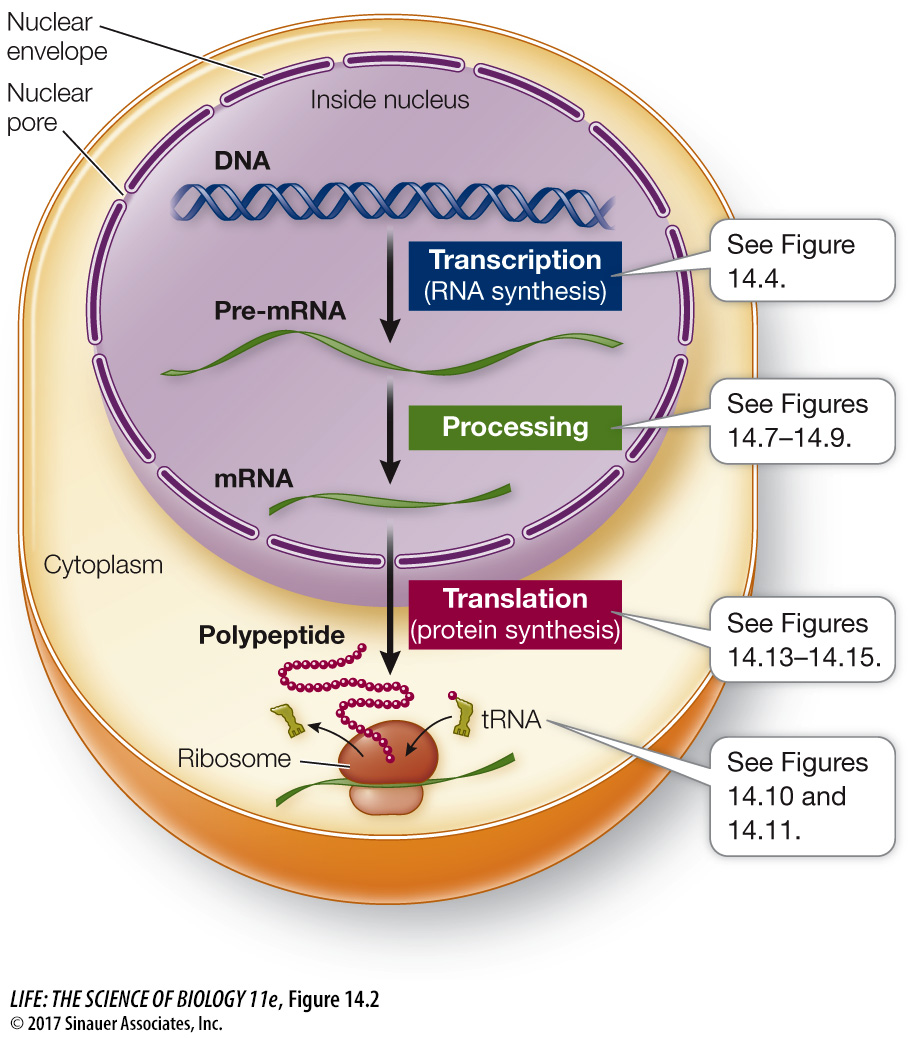Three types of RNA have roles in the information flow from DNA to protein
There are numerous types of RNA. Three of them have vital roles in gene expression.
MESSENGER RNA AND TRANSCRIPTION When a protein-
focus: key figure

Q: In general, how would this diagram be different for a prokaryotic cell?
Prokaryotic cells lack a nucleus, so transcription and translation are not spatially separated.
Activity 14.1 Eukaryotic Gene Expression
RIBOSOMAL RNA AND TRANSLATION The ribosome is essentially a protein synthesis factory composed of multiple proteins and several ribosomal RNAs (rRNAs). One of the rRNAs catalyzes peptide bond formation between amino acids, to form a polypeptide.
TRANSFER RNA MEDIATES BETWEEN mRNA AND PROTEIN Another type of RNA called transfer RNA (tRNA) can both bind a specific amino acid and recognize specific sequences of nucleotides in mRNA. It is the tRNA that recognizes which amino acid should be added next to a growing polypeptide chain.
Media Clip 14.1 Protein Synthesis: An Epic on a Cellular Level